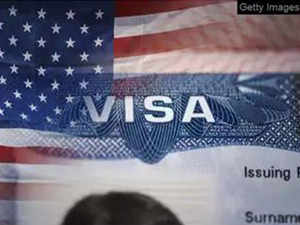 Agencies
AgenciesTagore had mentioned that "Highest education is that which does not merely give us information but makes our life in harmony with all existence". For centuries, young minds have traveled miles to different destinations in search of opportunities for acquiring skills and knowledge to meet the challenges of life. Over the past few decades, considerable significance has been attached to encourage international mobility of students by many countries.
A whole range of policy measures was adopted by countries to attract students to participate in the various programme of studies. The inflow of students to one's country was approached both from a political and economic perspective. Open door policy of the developed nations, encouraging the students of countries of the South, assumed significance as part of cultural diplomacy. International student mobility has transformed from a self organized/ unorganized endeavour to a highly organized venture leading to internationalistion of higher education in a major way. The forces of globalization led to a surge in such programmes.
The quest for higher-level learning and acquiring knowledge, made the youth to look for studies abroad. Studying abroad became synonymous to material success and social status. In this context, the United States of America stands apart and dominates the table. The country has consistently ranked as the most favored destination for international students for a long time. Over forty percent of the world's top 100 universities are located in the U.S. As per the data of Times Higher education (2016-17), on the World Reputation Ranking of Universities, 15 US universities rank among the top global universities. The market value of US education, revered and notable universities, quality teaching, training, highly accredited professors, advanced technology, research facilities, internship and job prospects in the US, after graduating, the number of Nobel prize winners from the US, have made the United States of America the all time favourite and a dream destination for students.
(Join our ETNRI WhatsApp channel for all the latest updates)
Bachelor's or higher degree in Science, technology, engineering, mathematics (STEM)remains the most sought after stream of study followed by business, management and marketing fields. The Open Doors Report on International Educational Exchange published by the Institute of International Education cited that the number of international students in the United States surpassed one million for the third consecutive year and reached a new high in 2017-2018 academic year.
The United States of America recorded an enrollment of 1,095,299 students in the 2018-2019 academic year. The number of foreign students in U.S. colleges and universities grew dramatically in the post globalised period. The astonishing increase of students from emerging economies like China, Republic of Korea, Saudi Arabia, Vietnam etc(The UIS, UNESCO) has added a new dimension to the trajectory of international students to the US. The UIS, UNESCO data mirror that the largest number of international students to US hail from China followed by India.
However, the flight of the US-bound international students faces an uncertain prospect in the wake of the publication of a proposal by The Dept of Homeland Security ( DHS) in September, 2020. The proposal, posted in the Federal Register on Thursday, September 24, this year by the DHS, aims at setting a time limit for three categories of visa holders in the USA which include three categories of visa holders, namely, the F(students, who are permitted to temporarily live in the U.S. to seek a higher education degree) J (individuals with unique skills, who are approved to participate in work-and study-based exchange visitor programs), and I (foreign media persons or journalists) categories.
The proposed changes related to the visa regime of the USA intend to eliminate the prevailing "Duration Status framework and control the inflow of foreign students to the US.Duration of status" underlines no fixed time limit of stay in US for an international student. A student under F and J categories are permitted to stay in the United States for as long as they take a full course load and as long as it takes to get their degrees provided they do not violate any provisions of immigration law. The proposed framework, if implemented, would set most visas to expire after four years and would limit student visas to two years for students either born in or holding citizenship of a country on the State Sponsors of Terrorism list.
Further layers of restriction have been proposed for nationals from countries linked to high rates of visa overstays, greater than 10%, are expected to have a limited two-year fixed stay period. The list contains near about sixty countries and the majority of the countries fall under the African continent. Several Middle Eastern, Asian countries will also be affected by the new proposed regime, if implemented. The rule appears to be very harsh on the research scholars as normally Ph.D. students take five years or more for course completion.
This may also be a cause of concern for the students who may find it difficult to complete the study within a designated time frame, as all students might not be gifted with equal grasping power. Though DHS proposal has incorporated a provision of extension, its scopes and utility appear to be very narrow and limited. The rule states that "a pattern of behavior demonstrating that a student is repeatedly unable or unwilling to complete his or her course of study, such as failing grades, in addition to academic probation or suspension, is an unacceptable reason for program extensions." .
Further, it has underlined that "compelling academic reasons, a medical condition, or a natural disaster or another major event, may qualify for extension- making it almost difficult to avail off. Not only that, such dictions which usually falls under the preview of academic institutions will now be the discretion of the DHS. The rule has been criticized by many for its enforcement dimension which arms the DHS with enormous power.
It is a huge document which runs to 256 pages. The proposal is open for public comment for 30 days and the comments period will end by October 25.Many comments are pouring in the public domain. Doug Rand, a senior fellow at the Federation of American Scientists who worked on immigration policy in the White House during the Obama administration, dubbed the proposal as a massive self-inflicted wound on the United States. Esther D. Brimmer, the executive director and CEO of NAFSA(National Association for Foreign Students Advisers) an Association of International Educators, said in a statement that, "this rule would make it more difficult for international students and scholars to maintain their legal status in the United States and make it far more difficult for international educators to administer. Sadly, this proposal sends another message to immigrants, and in particular international students and exchange visitors, that their exceptional talent, work ethic, diverse perspectives, and economic contributions are not welcome in the United States."
The proposed far-reaching changes are in such stark contrast to the policy pronouncements of the US Government that governed the policy of admitting foreign students for decades. Only a year back, in November 2019, Marie Royce, the Assistant secretary of states for Educational and cultural affairs said that "Promoting international student mobility remains a top priority for the Bureau of Educational and Cultural Affairs". This leads us to question the motive behind such submission by the DHS.
What made the Trump administration to think in terms of such sweeping changes in the immigration laws? No other governments have thought o in the past twenty years? Is it the pandemic situation, the slowing down of the economy and the laying of a large workforce that compelled the administration to target the 'other' – the so-called non-Americans?
This is not a sudden development. The proposal reflects the progression of many reactionary and protectionists measures systematically introduced by the Trump administration on various domains of administrative policy. The policy proposals of the DHS related to F, I, J visas and H-1B work visas are in fact in line with the Executive order No. 13788, 82 Fed. Reg. 18837 (April 18, 2017) which marks the Trump administration's mounting restrictions on visa regulations and is aligned with the 'Buy American and Hire American,' slogan- popularized by the government.
One wonders whether it is the Coronavirus pandemic that might have changed the way the US Government looks at the burgeoning immigrant workers across sectors. Let's explore how the proposer of the new policy has justified the proposal. According to DHS, the existing D/S policy has resulted in a "significant increase in "the number of academic students, exchange visitors and foreign media representatives under (F visa) (J Visa) and (I visa) which pose "a challenge to the Department's ability to effectively monitor and oversee these categories of non-immigrants." DHS also feels that such a sharp rise of non –immigration population concerns the integrity of the programs and a potential for increased risk to national security." The policy is necessary, the Trump administration argues because under the status quo students can remain in the U.S. as long as they have documents showing that they are continuing to study to complete their degree. An undetermined length of time that it says poses a national security risk.
Arguably, the immigration policy of a country is always a sensitive issue which has an economic, political and security dimension. It is more so in a country which has witnessed terrorist attacks on its soil –the 9/11. It seems the increasing applications from students of countries which are enlisted as sponsors of terrorism has caused concern as the D/S framework allows a prolonged stay of the students in the country. One may take a sympathetic approach to president Trump's immigration policy paradigm, however myopic that may appear. The pandemic, the security concerns and the nation's shattering economy may be cited as the probable factors prompting the administration to take such drastic measures.
Clear enough, the facts are many but the truth is one. America is in the midst of the presidential election and the White House is up for grab. The Trump administration is trying to appeal the populist sentiment to get a second-time entry to the power corridor. Therefore the rationale of protecting American job markets from the non –Americans shuns logic. The contribution of the immigrant workforce to the US economy is a celebrated fact.
As per a study by Stanford University, immigrants account for 37% of total US innovation, despite only making up 16 percent of the inventor workforce." (Shai Bernstein et al, 2018) and twenty-two percent of business founders in the United States are those who came to the country as foreign students. (Businessroundtable.org)t may not be out of context to cite how workforce data of NASA takes pride in highlighting its diverse and inclusionary workforce programme and policy which has contributed to its astonishing success.
By eliminating D/S framework, can the Trump administration guarantee that the nation has white Americans in reserve to replace the millions of Asians, Africans Caucasians and other skilled foreigners who made an invaluable contribution to enrich the US economy and the R and D process? Moreover, it is perplexing to follow, of all the visa applicants, how the students, exchange visitors and foreign journalists pose the least threat to the country's security?
For argument sake even if it is accepted that foreign journalists may disseminate information which may not be to the liking of the administration, but the students who are primarily the campus dwellers may pose security threats to the nation's integrity is difficult to comprehend. Targeting the students or exchange visitors, the largest of all non-immigration population, the proposal leaves many questions unanswered. Moreover, it is not clear whether the rule, if implemented will affect the existing students or will it be implemented from the next academic session for the new batch of students.
Few days are left for the outcome to reach the public domain regarding its enforcement. Uncertainties loom large on the future of the mobility of international students to the US. The proposed rule may be implemented without any modification or there may be a rollback as it happened in the case of an H1 visa. A lawsuit challenging Trump's H1 visa rule led the government to rescind the policy. The colleges and Universities will certainly take a call on the proposal. The loss of $44.7 billion to the US economy (from the foreign students) which is 2% of twenty trillion economies may not be a concern for the government but it will result in a substantial loss for the academic institutions in case the major chunk of students decides to look for other destination. The foreign student's contribution adds a substantial amount to the reputed institution's financial resources.
Further, it is not only a financial loss but more than that it is a loss of human resources which has contributed to the academic excellence and superiority of American academic institutions.. The recent lawsuit by Harvard University and the Massachusetts Institute of Technology (MIT) against the Immigration and Customs Enforcement's new guidance regarding online courses bears the testimony that the universities and colleges are likely to register their voices against the proposal which is bound to affect the inflow of international students in the USA. Inside Higher Ed (Washinton based Media Company) reports an estimated 25% decline in international student enrollment as regard to the USA. The election verdict also may impact the proposal if there is a change in the presidential administration.
In a nutshell, it is not a situation that one may predict on a prediction. No doubt the proposal has burdened the student community with anxiety and uncertainty. The students who are enrolled in the various programme in the US universities and colleges may need to take a call very soon about their future. Those who are still at the stage of considering a higher level of learning may have to reckon with alternative destinations. Many countries have come forward with an open-door policy for foreign students like Australia, Canada, Germany, etc.
It is to be seen whether the race for presidential election and rise of protectionist and conservative policies may put a dent on a country's reputation, standing and image of enriching, encouraging and empowering the excellence of individuals as well as academic institutions or human's age-old pursuance for excellence may excel.
The author is Asst Professor, dept of Political science, North-Eastern Hill university (NEHU).









 Get Unlimited Access to The Economic Times
Get Unlimited Access to The Economic Times
